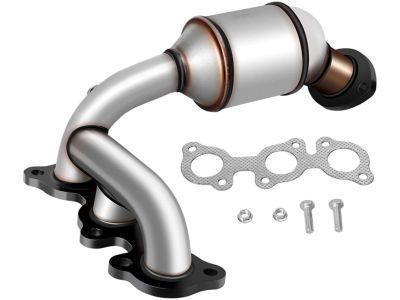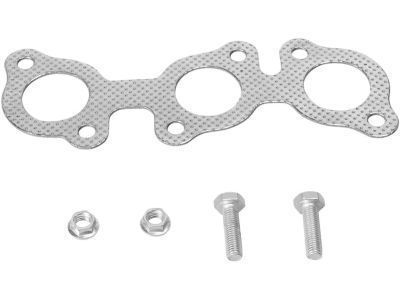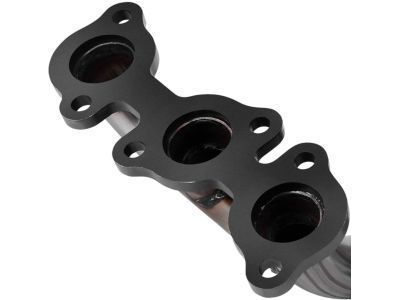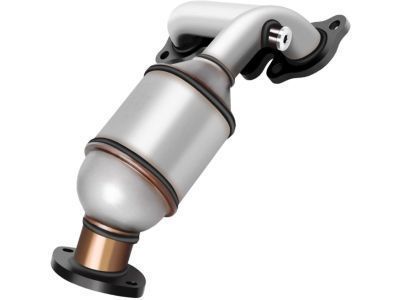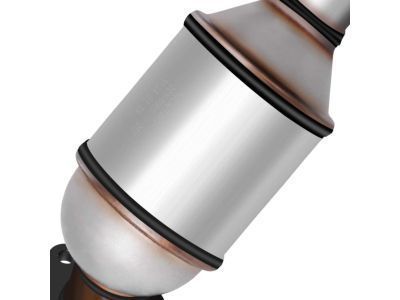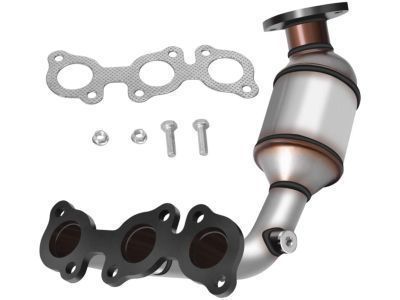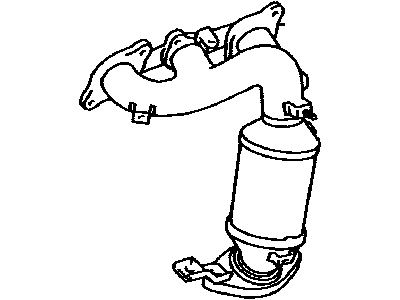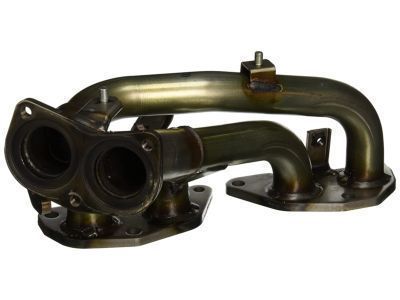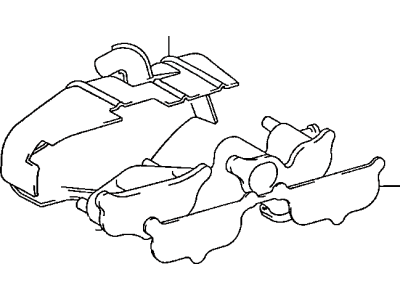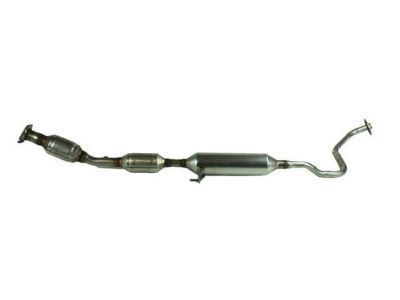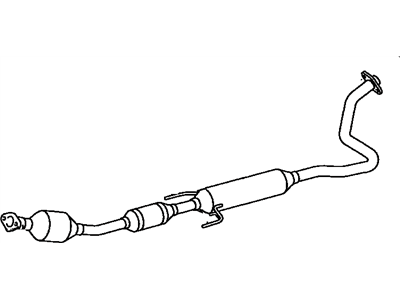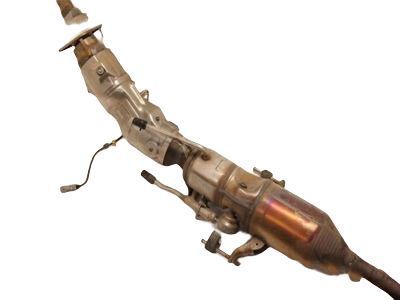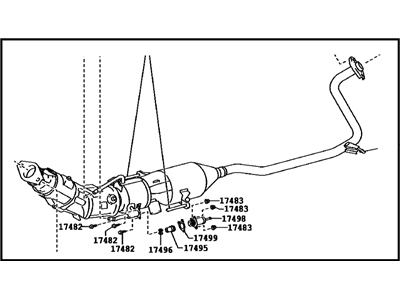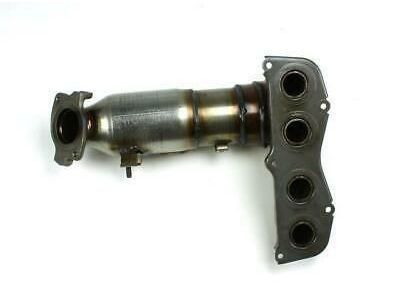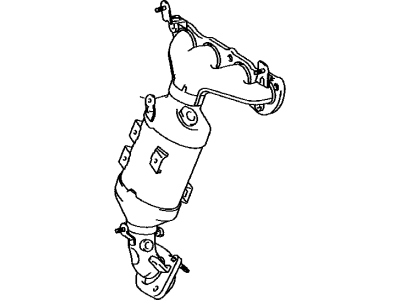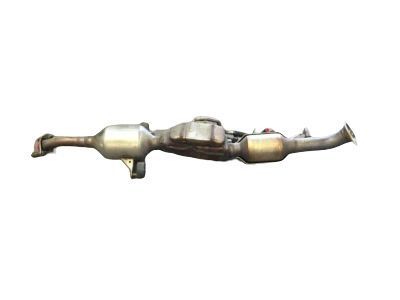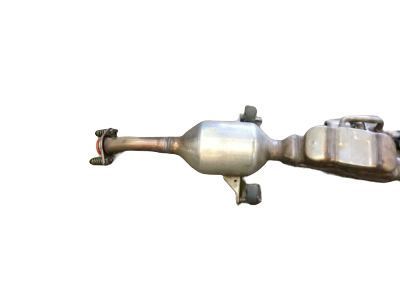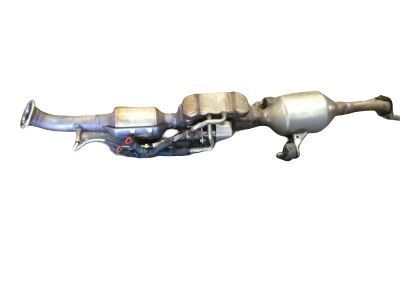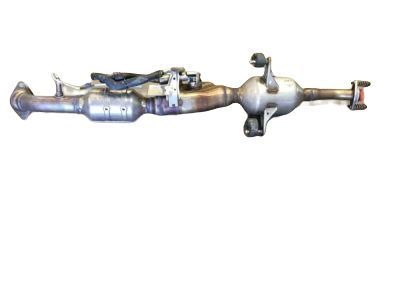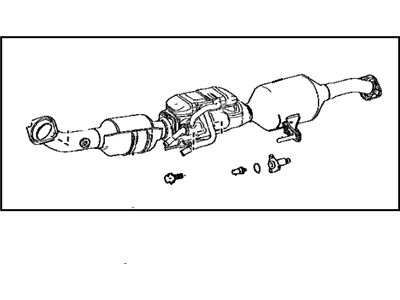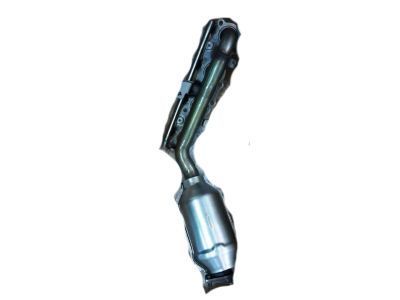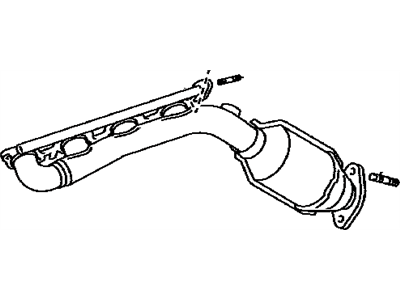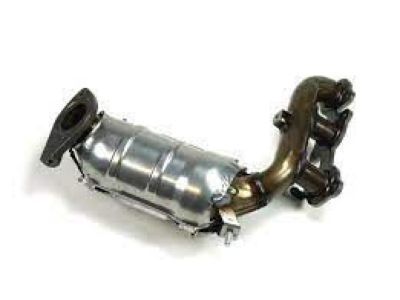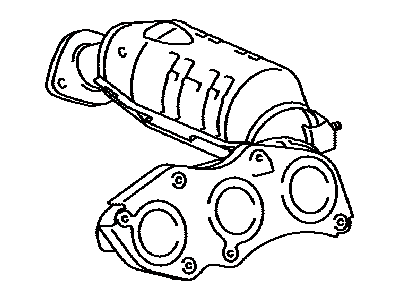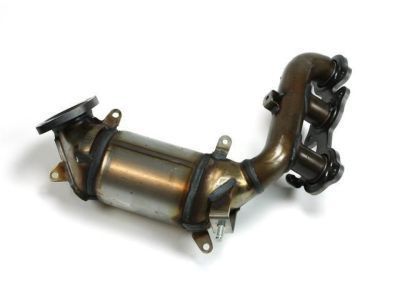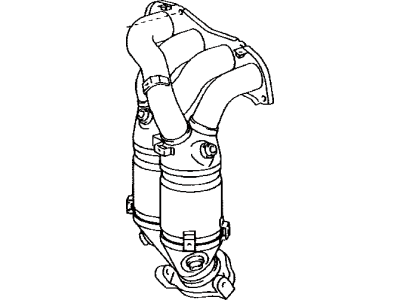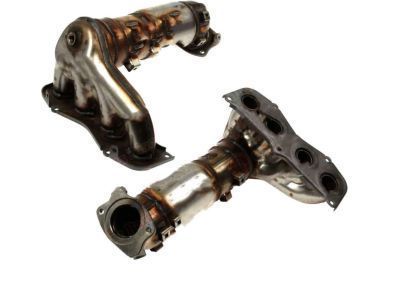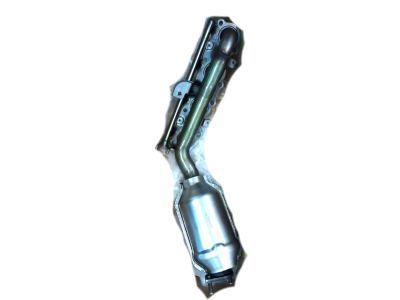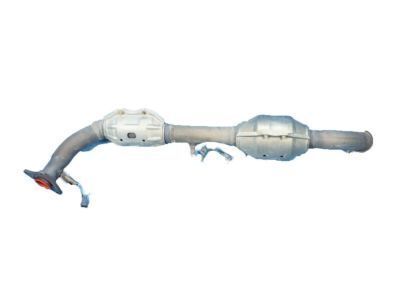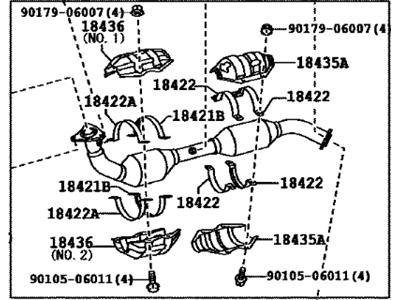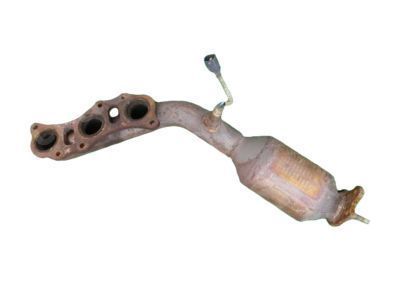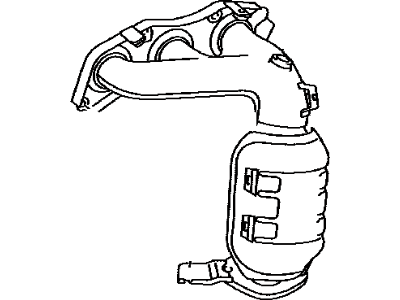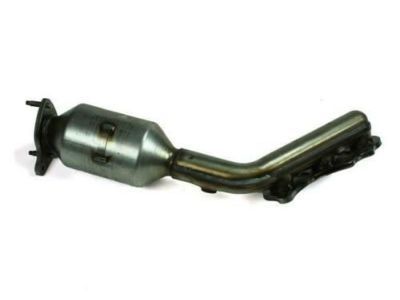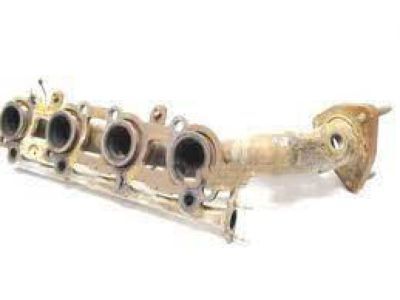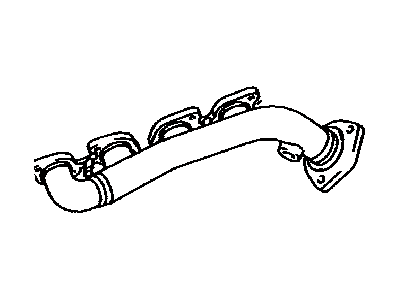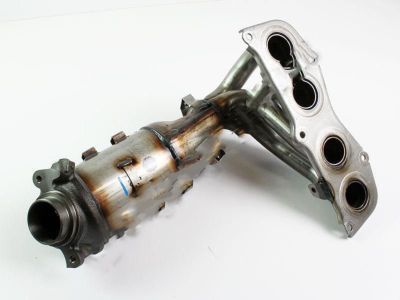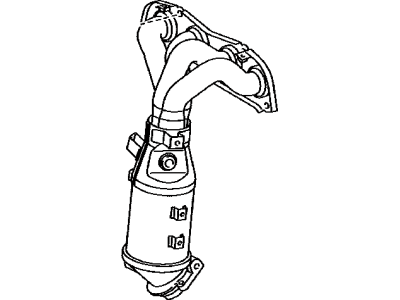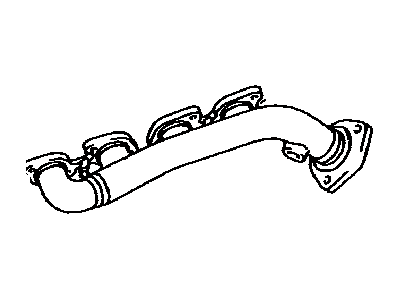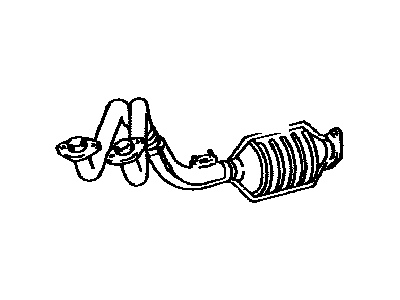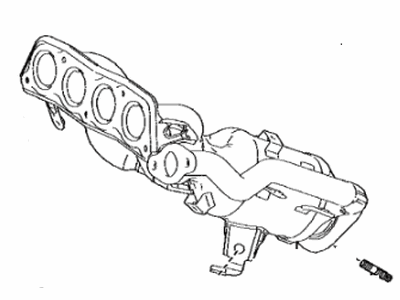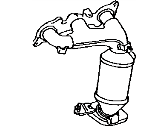

My Garage
My Account
Cart
Genuine Toyota Catalytic Converter
Cat. Converter- Select Vehicle by Model
- Select Vehicle by VIN
Select Vehicle by Model
orMake
Model
Year
Select Vehicle by VIN
For the most accurate results, select vehicle by your VIN (Vehicle Identification Number).
1098 Catalytic Converters found
Toyota Exhaust Manifold Converter Sub-Assembly, No.2
Part Number: 25052-20190$675.85 MSRP: $858.22You Save: $182.37 (22%)Ships in 1-3 Business DaysProduct Specifications- Other Name: Converter Sub-Assy, Exhaust Manifold, No.2; Exhaust Manifold, Manifold
- Manufacturer Note: *115=TOYOTA/03-/Y
Toyota Exhaust Manifold
Part Number: 17141-75080$259.83 MSRP: $372.57You Save: $112.74 (31%)Ships in 1-3 Business DaysProduct Specifications- Other Name: Manifold, Exhaust
Toyota Front Exhaust Pipe Assembly
Part Number: 17410-21500$2221.97 MSRP: $3038.76You Save: $816.79 (27%)Ships in 1-3 Business DaysProduct Specifications- Other Name: Pipe Assy, Exhaust, Front; Exhaust Pipe, Front Pipe
- Manufacturer Note: *114=TOYOTA/GD3EA6/Y
- Position: Front
Toyota Front Exhaust Pipe Assembly
Part Number: 17410-37300$1687.03 MSRP: $2307.17You Save: $620.14 (27%)Product Specifications- Other Name: Pipe Assembly, Exhaust, Front; Exhaust Pipe, Converter & Pipe, Front Pipe
- Manufacturer Note: *114=TOYOTA/GP1TB1/Y
- Position: Front
Toyota Exhaust Manifold Converter Sub-Assembly
Part Number: 25051-28180$1250.34 MSRP: $1587.73You Save: $337.39 (22%)Ships in 1-2 Business DaysProduct Specifications- Other Name: Converter Sub-Assy, Exhaust Manifold; Exhaust Manifold
- Manufacturer Note: CALIFORNIA SPEC
- Product Specifications
- Other Name: Pipe Assy Exhaust; Front Pipe
- Manufacturer Note: *114=TOYOTA/TL3/Y
- Position: Front
- Replaces: 17410-37A00, 17410-37B50
Toyota Exhaust Manifold Assembly
Part Number: 17150-50050$702.25 MSRP: $1048.57You Save: $346.32 (34%)Ships in 1-2 Business DaysProduct Specifications- Other Name: Manifold Assembly, Exhaust; Exhaust Manifold
Toyota Right Exhaust Manifold Sub-Assembly
Part Number: 17140-20030$536.05 MSRP: $800.39You Save: $264.34 (34%)Ships in 1-3 Business DaysProduct Specifications- Other Name: Manifold Sub-Assy, Exhaust, Rh; Exhaust Manifold
- Position: Passenger Side
Toyota Exhaust Manifold Converter Sub-Assembly
Part Number: 25051-20040$728.66 MSRP: $925.28You Save: $196.62 (22%)Ships in 1-3 Business DaysProduct Specifications- Other Name: Converter Sub-Assy, Exhaust Manifold; Exhaust Manifold, Manifold
- Manufacturer Note: *115=TOYOTA/03-/Y
Toyota Exhaust Manifold Converter Sub-Assembly
Part Number: 25051-28300$744.48 MSRP: $945.36You Save: $200.88 (22%)Ships in 1-3 Business DaysProduct Specifications- Other Name: Converter Sub-Assy, Exhaust Manifold; Exhaust Manifold
- Manufacturer Note: CALIFORNIA SPEC,*195,*108
Toyota Right Exhaust Manifold Sub-Assembly
Part Number: 17140-50060$759.96 MSRP: $1134.73You Save: $374.77 (34%)Ships in 1 Business DayProduct Specifications- Other Name: Manifold Sub-Assy, Exhaust, Rh; Exhaust Manifold
- Position: Passenger Side
Toyota Front Exhaust Pipe Assembly
Part Number: 17410-38310$1371.99 MSRP: $1876.33You Save: $504.34 (27%)Ships in 1-3 Business DaysProduct Specifications- Other Name: Pipe Assembly, Exhaust, Front; Converter & Pipe, Front Pipe
- Manufacturer Note: MEXICO SPEC
- Position: Front
Toyota Left Exhaust Manifold Sub-Assembly
Part Number: 17150-31250$619.93 MSRP: $925.64You Save: $305.71 (34%)Ships in 1-3 Business DaysProduct Specifications- Other Name: Manifold Sub-Assy, Exhaust, Lh; Exhaust Manifold
- Manufacturer Note: *114=*566
- Position: Driver Side
- Replaces: 17150-31070
Toyota Left Exhaust Manifold Sub-Assembly
Part Number: 17150-31011$600.21 MSRP: $896.20You Save: $295.99 (34%)Ships in 1-3 Business DaysProduct Specifications- Other Name: Manifold Sub-Assy, Exhaust, Lh; Exhaust Manifold
- Manufacturer Note: *115=TOYOTA/03-/Y
- Position: Driver Side
- Replaces: 17150-31010
Toyota Left Exhaust Manifold Sub-Assembly
Part Number: 17105-50190$332.21 MSRP: $476.37You Save: $144.16 (31%)Ships in 1-3 Business DaysProduct Specifications- Other Name: Manifold Sub-Assy, Exhaust, Lh; Exhaust Manifold
- Position: Driver Side
Toyota Exhaust Manifold Converter Sub-Assembly
Part Number: 25051-28340$669.95 MSRP: $850.73You Save: $180.78 (22%)Ships in 1 Business DayProduct Specifications- Other Name: Converter Sub-Assy, Exhaust Manifold; Exhaust Manifold
- Replaces: 25051-28360
Toyota Front Exhaust Pipe Assembly
Part Number: 17410-0C200$1455.10 MSRP: $1989.98You Save: $534.88 (27%)Product Specifications- Other Name: Pipe Assembly, Exhaust, Front; Exhaust Pipe, Converter & Pipe, Front Pipe
- Position: Front
Toyota Left Exhaust Manifold Sub-Assembly
Part Number: 17105-50151$332.21 MSRP: $476.37You Save: $144.16 (31%)Ships in 1-2 Business DaysProduct Specifications- Other Name: Manifold Sub-Assy, Exhaust, Lh; Exhaust Manifold
- Position: Driver Side
- Replaces: 17105-50150
Toyota Front Exhaust Pipe Assembly
Part Number: 17401-66090$1790.52 MSRP: $2448.71You Save: $658.19 (27%)Ships in 1-3 Business DaysProduct Specifications- Other Name: Pipe Assy, Exhaust, Front; Converter & Pipe, Front Pipe
- Position: Front
Toyota Exhaust Manifold
Part Number: 17141-F0010$621.60 MSRP: $928.14You Save: $306.54 (34%)Ships in 1-2 Business DaysProduct Specifications- Other Name: Manifold, Exhaust
| Page 1 of 55 |Next >
1-20 of 1098 Results
Toyota Catalytic Converter Parts Questions & Experts Answers
- Q: What is the purpose and function of a catalytic converter in an exhaust system on 2002 through 2006 Toyota Avalon?A:Since there was an extended warranty on emissions-related components resulting from a Federally required regulation such as the catalytic converter, it will be wise to seek advice from the dealer's service department before going for a replacement. The catalytic converter serves as an emission control device in the exhaust system, designed to reduce pollutants from exhaust gases, with two types available: the ordinary oxidation cat'. which decreases the emission of hydrocarbon and carbon monoxide and the three-way cat'. which further decreases emission of oxides of nitrogen. Catalytic converters are installed in one of the forms of the depicted type in covered models; one for each bank in V6 engine models' exhaust manifold. A check for a non-functioning converter necessitates the use of expensive equipment and it is suggested that a check and fix be conducted by a dealer or an authorized emission testing center. When performing any underbody servicing, check the converter for any signs of leaks, rust, denting, and general damages usually at the weld area and flange bolts that hold the converter in the exhaust system; any sign of damages should call for change. However, plug converters are uncommon, and restricted converters can happen; a vacuum gauge can be used to fix exhaust limitations. For a restricted converter, attach a vacuum gauge to one of the intake manifold vacuum sources and collect vacuum reading when the engine is warmed and again after jerking the throttle. If there is a considerable varia-tion between the after the fourth test reading and the idle reading, then the exhaust system maybe constricted. For removal, apply the nuts on the studs of flange and then unfasten the flex section from the converter, remove the converter from the exhaust system and then fasten it again in reverse manner.
Related Toyota Parts
Browse by Model
4Runner Catalytic Converter 86 Catalytic Converter Avalon Catalytic Converter C-HR Catalytic Converter Camry Catalytic Converter Celica Catalytic Converter Corolla Catalytic Converter Corolla Cross Catalytic Converter Corolla iM Catalytic Converter Corona Catalytic Converter Cressida Catalytic Converter Crown Catalytic Converter Echo Catalytic Converter FJ Cruiser Catalytic Converter GR Corolla Catalytic Converter GR Supra Catalytic Converter GR86 Catalytic Converter Grand Highlander Catalytic Converter Highlander Catalytic Converter Land Cruiser Catalytic Converter MR2 Catalytic Converter MR2 Spyder Catalytic Converter Matrix Catalytic Converter Paseo Catalytic Converter Pickup Catalytic Converter Previa Catalytic Converter Prius AWD-e Catalytic Converter Prius C Catalytic Converter Prius Catalytic Converter Prius Prime Catalytic Converter Prius V Catalytic Converter RAV4 Catalytic Converter RAV4 Prime Catalytic Converter Sequoia Catalytic Converter Sienna Catalytic Converter Solara Catalytic Converter Starlet Catalytic Converter Supra Catalytic Converter T100 Catalytic Converter Tacoma Catalytic Converter Tercel Catalytic Converter Tundra Catalytic Converter Van Catalytic Converter Venza Catalytic Converter Yaris Catalytic Converter Yaris iA Catalytic Converter
